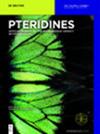血清同型半胱氨酸水平与溃疡性结肠炎的相关性:荟萃分析
IF 0.9
4区 医学
Q4 BIOCHEMISTRY & MOLECULAR BIOLOGY
引用次数: 2
摘要
摘要背景:本荟萃分析的目的是通过汇集所有相关出版物来研究血清同型半胱氨酸(Hcy)浓度与溃疡性结肠炎(UC)的相关性。方法系统检索PubMed、EMBase、Web of Science、Google Scholar、CBM和CNKI的电子数据库中的同型半胱氨酸/Hcy、溃疡性结肠炎/UC和炎症性肠病的文本词。血清Hcy和UC之间的相关性通过标准差(SMD)和相应的95%置信区间(95%CI)来证明。发表偏倚通过Egger线性回归检验和Begg漏斗图进行评估。结果系统检索PubMed、EMBase、Web of Science、Google Scholar、CBM和CNKI的相关电子数据库,共收录了18篇与血清Hcy和UC相关的文献。UC组和健康对照组的血清Hcy水平分别为14.01±2.76和10.31±1.59μmol/L,差异有统计学意义(p<0.05)。因此,SMD是通过随机效应模型合并的。合并SMD为1.20(95%CI:0.89-1.51),表明UC组的血清Hcy水平显著高于健康对照组,具有统计学差异(Z=7.52,P<0.001)。Egger线性回归检验表明没有发表偏倚(t=1.45,P=0.17),这表明Hcy可能在UC的发展中发挥重要作用,并可作为UC诊断的血清学生物标志物。本文章由计算机程序翻译,如有差异,请以英文原文为准。
Correlation between serum homocysteine level and ulcerative colitis: A meta-analysis
Abstract Background: The aim of the present meta-analysis was to investigate the correlation of serum homocysteine (Hcy) concentration and ulcerative colitis (UC) through pooling all the relevant publications. Methods The electronic databases of PubMed, EMBase, Web of Science, Google Scholar, CBM, and CNKI were systematic searched with the text words of homocysteine/Hcy, ulcerative colitis/UC, and inflammatory bowel disease. The correlation between serum Hcy and UC were demonstrated by stand mean difference (SMD) and corresponding 95% confidence interval (95% CI). The publication bias was evaluated by Egger’s line regression test and Begg’s funnel plot. Results After systematic searching the related electronic databases of PubMed, EMBase, Web of Science, Google Scholar, CBM, and CNKI, eighteen publications relevant to serum Hcy and UC were included in the present meta-analysis. The serum Hcy leves were 14.01±2.76 and 10.31±1.59 μmol/L for UC groups and healthy controls respectively with statistical difference (p<0.05). Significant heterogeneity was found (I2=94.5%, p<0.001) among the included studies. Therefore, the SMD was pooled through the random effect model. The pooled SMD was 1.20 (95% CI: 0.89-1.51), indicating that serum Hcy levels were significant higher in UC groups compared to healthy controls with statistical difference (Z=7.52, P<0.001). Egger’s line regression test indicated no publications bias (t=1.45, p=0.17). Conclusion: Serum Hcy levels were usually elevated in UC patients, which indicates that Hcy may play an important role in UC development and may be used as a serological biomarker for UC diagnosis.
求助全文
通过发布文献求助,成功后即可免费获取论文全文。
去求助
来源期刊

Pteridines
生物-生化与分子生物学
CiteScore
1.20
自引率
25.00%
发文量
6
审稿时长
>12 weeks
期刊介绍:
Pteridines is an open acess international quarterly journal dealing with all aspects of pteridine research. Pteridines are heterocyclic fused ring compounds involved in a wide range of biological functions from the color on butterfly wings to cofactors in enzyme catalysis to essential vitamins. Of the pteridines, 5,6,7,8-tetrahydrobiopterin is the necessary cofactor of several aromatic amino acid monoxygenases, the nitric oxide synthases and glyceryl ether monoxygenase (GEMO). Neopterin plays an essential role in the immune system and is an important biomarker in laboratory medicine for diseases such as HIV, cardiovascular disease, malignant tumors, among others.
Topics:
-Neopterin, dihydroneopterin, monapterin-
Biopterin, tetrahydrobiopterin-
Folates, antifolates, riboflavin-
Phenylalanine, tyrosine, phenylketonuria, serotonin, adrenalin, noradrenalin, L-DOPA, dopamine, related biogenic amines-
Phenylalanine hydroxylase, tyrosine hydroxylase, tryptophan hydroxylase, nitric oxide synthases (iNOS), alkylglycerol monooxygenase (AGMO), dihydropterin reductase, sepiapterin reductase-
Homocysteine, mediators of inflammation, redox systems, iron.
 求助内容:
求助内容: 应助结果提醒方式:
应助结果提醒方式:


